Death Count Among Palestinians Rises as Thousands Protest in Gaza
A well-known Palestinian journalist who was covering the strife at the border is among the new fatalities. Hundreds more are injured.KHUZAA, Gaza Strip—Thousands of Palestinians protested along Gaza’s sealed border with Israel on Friday, engulfing the volatile area in black smoke from burning tires to try to block the view of Israeli snipers and cheering a Hamas strongman who pledged that the border fence will eventually fall.
Israeli troops opened fire from across the border, killing at least nine Palestinians and wounding 491 others — 33 of them seriously — in the second mass border protest in a week, Gaza health officials said. A well-known Palestinian journalist was among the dead, and hundreds of others suffered other injuries, including tear gas inhalation, the officials said.
The deaths brought to at least 31 the number of Palestinians killed by Israeli fire since last week.
Early Saturday, Palestinian health officials confirmed that Yasser Murtaga had died from a gunshot wound sustained while covering demonstrations near the Israeli border in Khuzaa. The area was the scene of large protests Friday, and was covered in thick black smoke.
Murtaga was over 100 meters (yards) from the border, wearing a flak jacket marked “press” and holding his camera when he was shot in an exposed area just below the armpit. Journalists were in the area as protesters were setting tires on fire.
The Israeli military has said it fired only at “instigators” involved in attacks on soldiers or the border fence. It had no immediate comment.
Murtaga worked for Ain media, a local TV production company that has done projects, including aerial drone video, for foreign media. He was not affiliated with Hamas or any other militant group.
The latest casualties were bound to draw new criticism from rights groups that have branded Israel’s open-fire orders on the border as unlawful, after Israel’s defense minister warned that those approaching the fence were risking their lives.
The U.N. human rights office said Friday that it has indications that Israeli forces used “excessive force” against protesters last week, when 15 Palestinians were killed or later died of wounds sustained near the border.
An Israeli military spokesman defended the rules of engagement.
“If they are actively attacking the fence, if they are throwing a molotov cocktail that is within striking distance of Israeli troops or similar activities, then those persons, those rioters, become, may become, a target,” said Lt. Col. Jonathan Conricus.
Friday’s large crowds suggested that Hamas, the Islamic militant group that has ruled Gaza since a 2007 takeover, might be able to keep the momentum going in the next few weeks. Hamas has called for a series of protests until May 15, the anniversary of Israel’s founding when Palestinians commemorate their mass uprooting during the 1948 war over Israel’s creation.
Israel has alleged that Hamas is using the mass marches as a cover for attacking the border fence, and has vowed to prevent a breach at all costs.
The military said that on Friday, protesters hurled several explosive devices and firebombs, using the thick plumes of smoke from burning tires as a cover, and that several attempts to cross the fence were thwarted.
Gaza’s shadowy Hamas strongman, Yehiyeh Sinwar, told a cheering crowd in one of the protest camps Friday that a border breach is coming.
The world should “wait for our great move, when we penetrate the borders and pray at Al-Aqsa,” Sinwar said, referring to the major Muslim shrine in Jerusalem.
He was interrupted several times by the crowd, who chanted, “We are going to Jerusalem, millions of martyrs!” and “God bless you Sinwar!”
The mass protests are perhaps Hamas’ last chance to break a border blockade enforced by Israel and Egypt since 2007, without having to succumb to demands that it disarm. The blockade has made it increasingly difficult for Hamas to govern. It has also devastated Gaza’s economy, made it virtually impossible for people to enter and exit the territory, and left residents with just a few hours of electricity a day.
Israel argues that Hamas could have ended the suffering of Gaza’s 2 million people by disarming and renouncing violence.
Friday’s marches began before Muslim noon prayers when thousands of Palestinians streamed to five tent encampments that organizers had set up several hundred meters (yards) from the border fence.
In one camp near the border community of Khuzaa, smaller groups of activists moved closer to the fence after the prayers. Demonstrators torched large piles of tires, engulfing the area in black smoke meant to shield them from Israeli snipers; the faces of some of the activists were covered in black soot.
Israeli troops on the other side of the fence responded with live fire, tear gas, rubber-coated steel pellets and water cannons.
After the first tires started burning, several young men with gunshot wounds began arriving at a field clinic at the camp.
Mohammed Ashour, 20, who had been among the first to set tires on fire, was shot in the right arm.
“We came here because we want dignity,” he said resting on a stretcher before paramedics transported him to the strip’s main hospital.
Yehia Abu Daqqa, a 20-year-old student, said he had come to honor those killed in previous protests.
“Yes, there is fear,” he said of the risks of advancing toward the fence. “We are here to tell the occupation that we are not weak.”
The death toll since last week includes at least 24 people killed during the two Friday protests at the border, as well as one killed during a protest on Tuesday. The six other deaths include three Palestinian gunmen killed in what Israel said were attempts to attack the border fence and three men who were struck by Israeli tank fire.
Speaking at U.N. headquarters in New York, Palestinian U.N. Ambassador Riyad Mansour put the death toll for Friday’s protest at nine; the discrepancy between that figure and the death toll provided by the Gaza Health Ministry could not immediately be explained.
More than 1,000 people suffered a range of injuries on Friday, including those hit by live fire and those overcome by tear gas, the Gaza health ministry said. Twelve women and 48 minors were among those hurt, the officials said.
At the United Nations, Secretary-General Antonio Guterres urged all parties to exercise maximum restraint, said U.N. spokesman Stephane Dujarric.
He said U.N. Mideast envoy Nickolay Mladenov had been in touch with Israeli and Palestinian officials to reinforce “the need to allow people to demonstrate peacefully.” Mladenov stressed the need to ensure that “excessive force is not used, and the need to ensure that children are not deliberately put in harm’s way,” Dujarric said.
For a second week in a row, the United States blocked a U.N. Security Council statement supporting the right of Palestinians to demonstrate peacefully and endorsing Guterres’ call for an independent investigation into the deadly protests in Gaza.
Palestinian U.N. Ambassador Riyad Mansour told reporters at U.N. headquarters in New York Friday evening that 14 of the 15 council nations agreed to the statement, but the U.S., Israel’s closest ally, objected.
A White House envoy urged Palestinians to stay away from the fence. Jason Greenblatt said the United States condemns “leaders and protesters who call for violence or who send protesters — including children — to the fence, knowing that they may be injured or killed.”
Hamas has billed the final protest, set for May 15, as the “Great March of Return” of Palestinian refugees and their descendants, implying they would try to enter Israel. Two-thirds of Gaza’s residents are descendants of refugees.
Palestinians commemorate May 15 as their “nakba,” or catastrophe, when hundreds of thousands were uprooted from homes in what is now Israel.
__
Daraghmeh reported from Ramallah, West Bank. Associated Press writers Karin Laub in Ramallah, Ian Deitch in Jerusalem, Josef Federman on the Gaza border and Edith M. Lederer at the United Nations contributed to this report.
Your support matters…Independent journalism is under threat and overshadowed by heavily funded mainstream media.
You can help level the playing field. Become a member.
Your tax-deductible contribution keeps us digging beneath the headlines to give you thought-provoking, investigative reporting and analysis that unearths what's really happening- without compromise.
Give today to support our courageous, independent journalists.
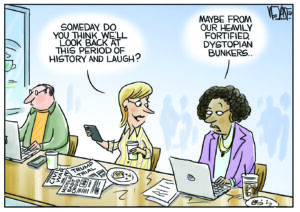
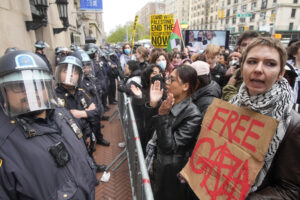

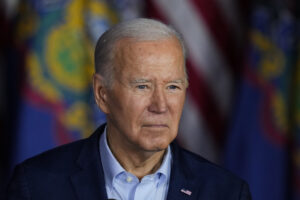
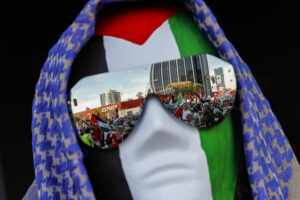
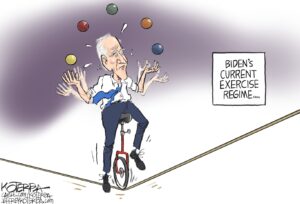
You need to be a supporter to comment.
There are currently no responses to this article.
Be the first to respond.